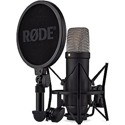Where the road leads to for South East Asian Radio in the age of EV Cars

The future and economic viability of the terrestrial radio broadcast industry in the age of electric vehicles in South East Asia
Terrestrial radio broadcasting is a traditional form of media that has been around for decades, providing information, entertainment and education to millions of listeners. However, with the advent of new technologies and changing consumer preferences, the radio industry faces many challenges and opportunities in the age of electric vehicles (EVs) in South East Asia.
One of the main challenges is the competition for in-car attention, as modern cars offer more options than just listening to music, such as video, games and apps. According to a Deloitte report, radio’s share of in-car listening time has declined from 84 percent in 2010 to 71 percent in 2017 globally ¹. Moreover, EVs may not support traditional radio receivers, as they are designed to reduce energy consumption and weight. This means that radio stations may lose a significant portion of their audience, especially in urban areas where EV adoption is higher.
Another challenge is the decline in radio revenue and profitability, as advertisers shift their spending to digital platforms that offer more targeted and measurable results. According to Statista, the revenue of the media market in the Philippines, one of the largest radio markets in South East Asia, decreased from 1.2 billion U.S. dollars in 2018 to 1.1 billion U.S. dollars in 2020 ². Similarly, the revenue of the radio industry in Malaysia dropped from 1.1 billion ringgit in 2018 to 0.9 billion ringgit in 2020 ³. These trends indicate that radio stations may struggle to sustain their operations and investments in the long run.
However, there are also opportunities for radio stations to adapt and innovate in the age of EVs in South East Asia. One of them is to embrace digital transformation and offer online streaming services that can be accessed via smartphones or car infotainment systems. This can help radio stations reach new audiences, especially younger and tech-savvy listeners, and generate new revenue streams from subscription fees or digital advertising. For example, Indonesia’s MNC Radio Network launched its online streaming app RDI+ in 2019, which offers live and on-demand content from its 18 radio stations across the country ⁴.
Another opportunity is to leverage the unique strengths of radio as a medium that can provide local, relevant and engaging content to listeners. Radio stations can differentiate themselves from other media platforms by focusing on quality journalism, community service, social responsibility and cultural diversity. Radio stations can also create interactive and personalized experiences for listeners by using data analytics, artificial intelligence and voice recognition technologies. For example, Singapore’s SPH Radio launched its AI-powered chatbot Radio Buddy in 2018, which allows listeners to interact with their favorite DJs, request songs and participate in contests via Facebook Messenger ⁵.
In conclusion, the future and economic viability of the terrestrial radio broadcast industry in the age of EVs in South East Asia depends on how well radio stations can cope with the challenges and seize the opportunities that arise from the changing media landscape. Radio stations need to be agile, innovative and customer-centric in order to survive and thrive in the digital era.
Sources:
(1) Digital Transformation of Terrestrial Radio: An Analysis of Simulcasted …. https://www.mdpi.com/2076-3417/11/23/11114.
(2) Countries using DAB/DMB – Wikipedia. https://en.wikipedia.org/wiki/Countries_using_DAB/DMB.
(3) Broadband in the ASEAN 9 Region – ESCAP. https://www.unescap.org/sites/default/files/1%20Broadband-Infrastructure-in-the-ASEAN-9-Region.pdf.
(4) Terrestrial Radio and Satellite Radio Services Information. https://www.globalspec.com/learnmore/engineering_services/communication_service_providers/terrestrial_satellite_radio_service.
(5) Electric vehicle market in the Asia-Pacific region – Statista. https://www.statista.com/topics/5654/electric-vehicles-in-asia-pacific/.
(6) Thailand Leads Southeast Asia EV Market With 60% Share. https://www.counterpointresearch.com/insights/sea-ev-sales-q3-2022/.
(7) Electric Vehicles Gain Ground in Southeast Asia; Thailand Dominates …. https://bing.com/search?q=electric+vehicles+market+share+in+South+East+Asia.
(8) Electric Vehicles Gain Ground in Southeast Asia; Thailand Dominates …. https://www.counterpointresearch.com/insights/sea-ev-sales-q4-2022/.
(9) Radio listening habits among public high school students in rural and …. https://repository.cpu.edu.ph/bitstream/handle/20.500.12852/2457/BAMC_TicarJM_2019_ab.pdf?sequence=1.
(10) Radio listening habits among public high school students in rural and …. https://repository.cpu.edu.ph/handle/20.500.12852/2457.
(11) Media in the Philippines – statistics & facts | Statista. https://www.statista.com/topics/6119/media-industry-in-the-philippines/.
(12) Radio and Television Broadcasting in Asia – ASIAWAVES. https://www.asiawaves.net/.
(13) Uniqlo drives revenue and profit growth at Fast Retailing Group. https://fashionunited.com/executive/management/uniqlo-drives-revenue-and-profit-growth-at-fast-retailing-group/2021071541037.
(14) Radio revenue and reach | Deloitte Insights. https://www2.deloitte.com/us/en/insights/industry/technology/technology-media-and-telecom-predictions/radio-revenue.html.
(15) undefined. https://doi.org/10.3390/app112311114.
(16) undefined. https://hdl.handle.net/20.500.12852/2457.









